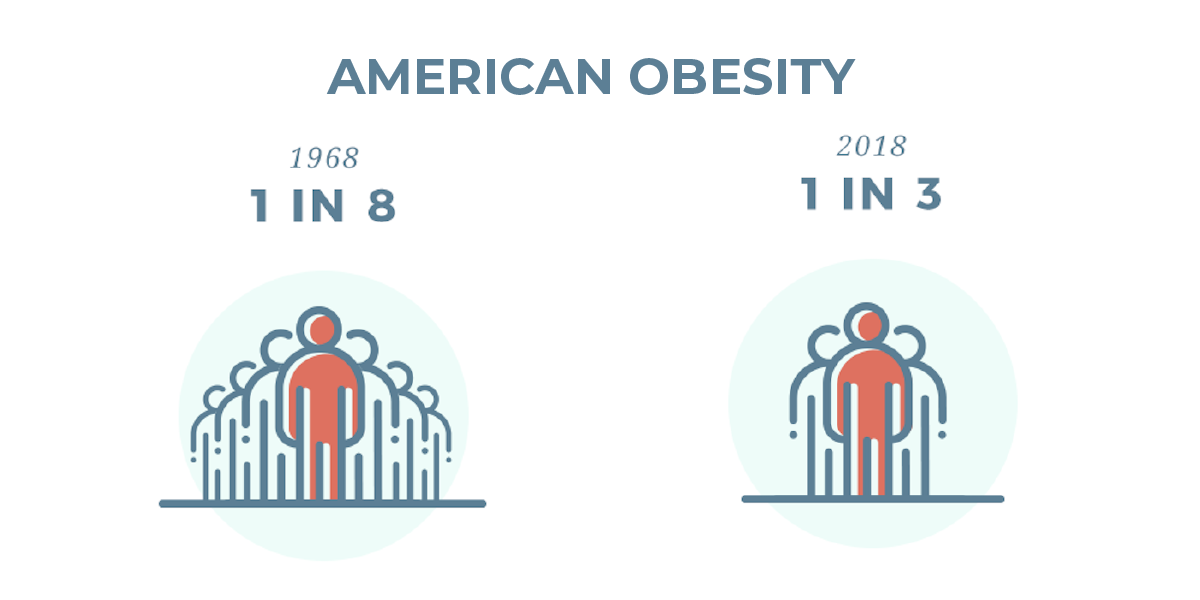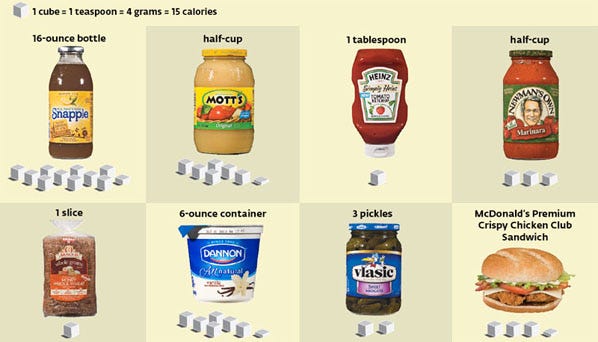Added sugar is everywhere and it’s killing us.

America is in a health crisis. This health crisis is highly-correlated to the foods that we typically eat. Fifty years ago, 1 in 8 American adults was obese, today the number is greater than 1 in 3. There is an abundance of scientific evidence that makes it clear that the greatest contributor to the rapid increase of chronic, metabolic diseases is the consumption of added sugar.
What is added sugar?
Added sugars are quite simply, any type of sugar or “sugar-like substance with a funny name” that is put into our food. These added sweeteners are extracted from their original sources (e.g., corn, rice, sugar cane), processed, and then added to our foods and beverages. Adding these sweetness can make foods more appetizing, so food companies put them in EVERYTHING to keep you coming back for more. However, they also know that consumers are starting to get a bit more savvy in recognizing these dangerous additives, so they tend to be a little sneaky in their ingredient lists to hide the presence of added sugar. In fact, there are over 60 different names for sugar that are added to our foods — you may recognize some of them: High Fructose Corn Syrup; Brown Rice Syrup; Cane Sugar; Tapioca Syrup; and my favorite “Organic Raw Sugar”. Added sugar is a poison, even if it comes in “organic” form.
High Fructose Corn Syrup
The most prevalent of the “sugar-like substances with a funny name” is high fructose corn syrup, or HFCS. HFCS arrived on the scene in 1975 as the cheapest form of added sugar to include as an ingredient. This product is made from government subsidized corn and is not only used to make our foods sweeter, but makes them cheaper to produce, more addicting and less filling (which in turn will drive consumers to buy greater volumes).
It is not a coincidence that in the 2 years following the invention of HFCS Americans doubled their intake of sugar. We all know that added sugars are present in things like candy bars, ice cream and sodas. What is not so intuitive is the reality that it also has been added to our baby formulas, salad dressings, yogurt and lunch meats. In fact, about 80% of the 6,000 items in an average grocery store in this country contain added sugar.

Since the infiltration of HFCS and added sugars into our diet, the statistics speak to the severity of the health crisis in the United States:
· There has been an 800% increase in diabetes in the United States since 1960
· 14% of adults in the U.S. are diabetic. Another 30% of the remaining adult population is predicted to get diabetes during their lives
· As a society, we all weigh 25 pounds more than our counter parts did 25 years ago
What About Foods with Naturally Occurring Sugars? Are Those Making Us Sick Too?
The short answer to this question is, simply, NO. Again, let me repeat that the greatest contributor to the rapid increase of metabolic disease is added sugar. The reason why fruits and vegetables, which typically contain differing levels of sugars is not making us sick has to do with how our body processes these types of foods. When we eat an apple, for instance, the sugar present in the apple is accompanied by fiber and micronutrients, which greatly slow down the processing of the sugars in our bloodstream. In addition, the nutrients present in whole foods like fruit are much more filling than added sugars, which have no nutrients. In turn, we typically eat much less sugar (particularly fructose) when consuming fruits then when we are eating chocolate bars.
How Does Added Sugar Make Us Sick?
When consuming sugar altered from its natural source, these sugars are processed much differently through our bodies. With no corresponding nutrients (primarily fiber) to slow down the processing of added sugar, our livers become overwhelmed by the rapid increase in blood sugar. To help the liver, the pancreas secretes insulin, which is the primary energy storage hormone in the human body. This excess insulin is then turned into fat. Gary Taubes explains the role of insulin and how it impacts our bodies well in the following excerpt from his book titled “Why We Get Fat”:
“Insulin is the principal regulator of fat metabolism…so when insulin levels are elevated, fat accumulates in the fat cells and insulin works to make us fatter. The one thing we absolutely must do if we want to get leaner — if we want to get fat out of our fat tissue and burn it — is to lower our insulin levels and to secrete less insulin to begin with.”
The human body never evolved to be able to digest the levels of added sugars that our now present in our diet. Secretion of insulin is the only way our body knows how to respond to metabolize the sugars. The excess secretion of insulin is a major problem in a few ways:
· Insulin is the primary hormone that works to make us fatter.
· Over time, when a high level of insulin is secreted, our cells can become resistant to insulin — requiring higher levels of insulin to keep our blood sugar levels in check. Insulin resistance then leads to type 2 diabetes.
· Those that obtain diabetes will die at greatly increased rates from heart disease or stroke. In addition, one’s lifestyle can be significantly impacted, with possible deterioration of eyesight, nerve damage, tooth decay, ulcers and gangrene, and the loss of limbs due to amputation.
It is becoming well-known that obesity and type 2 diabetes are highly related to how the fructose in our added sugar is processed in the liver. What is less well-known is the correlation between the consumption of added sugar and other metabolic diseases — such as cardiovascular disease and cancer.
· Cardiovascular Disease: there are two forms of cholesterol in the form of low-density lipoproteins (LDLs). One form is called a large-buoyant LDL, which is impacted by dietary fat. The other is called a small dense LDL, which is impacted by sugar and other harmful forms of carbohydrates that are not accompanied by indigestible fiber. The latest research suggests that it is only the small dense LDLs that get stuck in the walls of our blood vessels, which work to create plaque and cause cardiovascular disease. Since our sugar consumption has doubled over the last 40 years, our fat consumption in this country has decreased. However, during this same period, our rates of cardiovascular disease has continued to go up. Again, the evidence points to the added sugar is the primary guilty party.
· Cancers: harmful fatty acids are produced when excess fructose is processed in the liver. The circulation of these fatty acids has proven to speed the growth of cancer cells. In fact, this is true for 3 of the 5 most common cancer — colon, breast and prostate — in addition to one of the most deadly, pancreatic.
What We Can Do
Education is the first step. Once we become aware of the poison that we are putting into our bodies, and the impact this poison (in the form of added sugar) is having on our bodies, we can begin to make changes to our diet. Fortunately, it will become much easier for consumers to spot added sugars in the marketplace. In a great win for public health, the FDA will soon be mandating the labeling of all added sugars. Below is an excerpt of the FDA website:
On May 20, 2016, the FDA announced the new Nutrition Facts label for packaged foods to reflect new scientific information, including the link between diet and chronic diseases such as obesity and heart disease. The new label will make it easier for consumers to make better informed food choices.
“Added sugars,” in grams and as percent Daily Value, will be included on the label. Scientific data shows that it is difficult to meet nutrient needs while staying within calorie limits if you consume more than 10 percent of your total daily calories from added sugar, and this is consistent with the 2015–2020 Dietary Guidelines for Americans.
Unfortunately, there are not a lot of easy options for complete meals in a convenient format that don’t have high levels of added sugars. This is one of the reasons why are creating the SANS Meal Bar — which has 0g of added sugar. At SANS, we hope we can make your journey to living a more healthy and active life easier and more enjoyable.